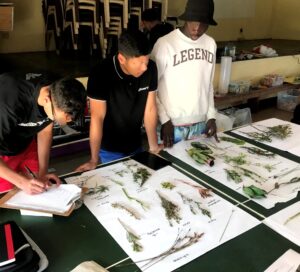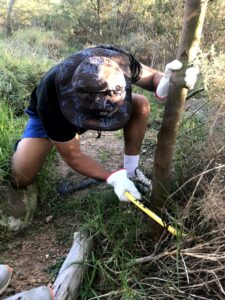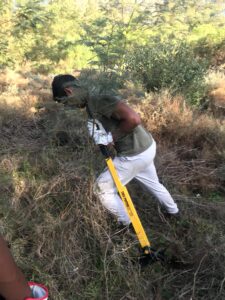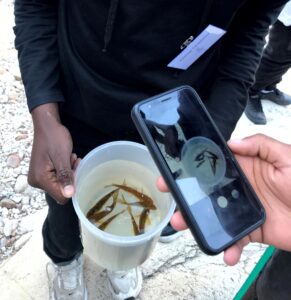For a group of Iimbovane learners and educators, the last weekend of the October school holiday was all about aliens – invasive alien species.
The group of boys, along with their educators, were from Luhlaza Secondary School, South Peninsula High School and Cape Academy for Mathematics, Science and Technology.
The programme kicked off with an informative presentation by the Faculty of Science’s Recruitment Officer, Ms Maambele Khosa, which introduced the learners to the courses offered at Stellenbosch University as well as potential careers.
Following the presentation, it was time for hands-on fieldwork and the group set off to perform a biodiversity assessment. The assessment was to determine if there is a difference in species diversity between areas invaded by black wattle (Acacia mearnsii) compared to that of uninvaded mountain fynbos areas. In addition, the learners also assessed a close by uninvaded wetland area. Plant and invertebrate samples were taken back to the campsite where the learners started with identifications.
Saturday’s activities started off with a hike and after a steep ascent, the group was rewarded with beautiful views of Wellington and Paarl Rock. Back at the campsite, the group visited the Witte River and got the rare opportunity to see the critically endangered Breede River redfin minnow (Pseudobarbus burchelli) from up-close. While admiring the minnows, the learners learned about the devastating impacts of invasive alien fish on these minnows.
The learners spend the rest of the afternoon using microscopes to identify invertebrates – especially the strange-looking creatures from the wetland area.
The late afternoon caused for a lot of excitement as the learners had to clear a large area invaded by black wattle. The group was first given an overview of the methods used to clear invasive alien plants and a chainsaw demonstration.
Then it was the learners’ turn – each armed with his own hacksaw, they started chopping down black wattles. The learners worked carefully, making sure to debark the remainder of the stump all the way down to expose the root.
At the end of the session, the learners were surprised to see the impact of their clearing efforts as they could see a mountain peak which was not visible before they started clearing.
The learners used Sunday morning to organise and analyse their data. Using tablets, the learners were able to calculate diversity indices and compare the diversity between the study areas.
The Iimbovane team was helped by Mogau Motlatla, who is completing his Postgraduate Certificate in Education with specialisation in Life Sciences at Stellenbosch University.
Both learners and educators expressed their thanks and appreciation for this once-in-a-lifetime learning experience.
|
|
|

|
|


